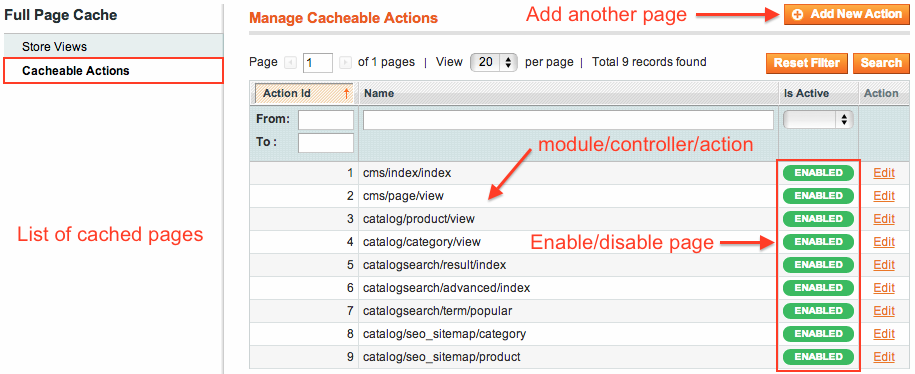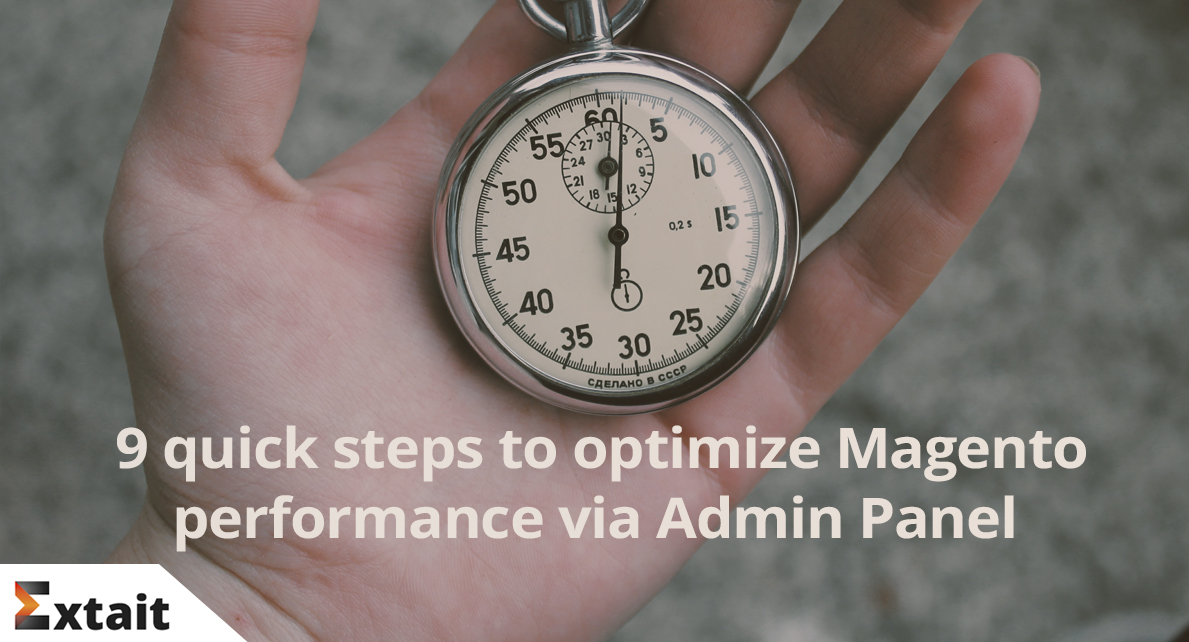9 quick steps to optimize Magento performance via Admin Panel
9 quick steps to optimize Magento performance via Admin Panel
In theory setting up and running a Magento store is a snack, right?
You go to Magento Admin Panel and follow quick steps. You configure the settings choosing the theme that sinks into your heart. You stock your empty shelves with products and brush it all up with a little bit of SEO magic. And you go online.
At some point along the way, your enthusiasm fades away. Poor page loading speed makes you blue. Every next second as you watch a page loading seems slower to you than Internet Explorer 8 itself. And the worst part is that your customers feel the same. According to research, 40% people click away from a website if it loads more than 3 seconds.
Want to optimize Magento performance to make it load faster?
Here are 7 quick but really essential Admin Panel tweaks that you can make right now to enhance your Magento site.
Step 1. Backup.
Hardly there’s anything more frustrating than a broken website. That’s why it is essential that you create a backup before you begin working on your Magento website. Log in into Admin panel, go to “Systems> Tools > Backup> Create Database Backup”. Done? We are moving further.
Step 2. Enable Magento caching
To provide access to a requested page, Magento performs quite a number of database queries, loads numerous PHP files/templates, and stores lots of technical data and configurations from xml file. Each action takes milliseconds which eventually form seconds. And seconds of your website visitors’ waiting already counts.
You can significantly optimize Magento performance by enabling Caching in Magento admin panel. For this you need to navigate to “System > Cache Management > Action>Select All > Submit”.
Magento 1
Magento 2
Step 3. Merge CSS and Javascript files
When accessing your Magneto store, a visitor needs to make connections to your webserver and download lots of data e.g. Style Sheets (CSS) files, images, Javascript (JS) files, etc. The more HTTP requests are being made, the longer it takes a webpage to load.
You can minify the amount of HTTP requests and thus speed up Magento by combining CSS and JS files. In Magento 1 navigate to “System > Configuration > Advanced > Developer”.
For Magento 2
Step 4. Enable full page cache (Magento 1)
Whenever a user makes a request to access a web page on your website, Magento needs to run blocks of code and fetch information from the database to build a page from different sections of cached data. With full-page caching, a fully-generated page can be read directly from the cache which is way faster compared to the default Magento setting. To enable it go to “Stores > Configuration > Advanced > System > Full Page Cache”.
In Magento 2 or Magento 1 Enterprise full page cache is available out-of-the-box, thus you don’t need to bother about it. However if you use Magento 1, you may freely use any third party modules based on “varnish cache” technology.

Step 5. Enable flat catalog
By default, Magento uses Entity Attribute Value (EAV) to manage the catalog data via multiple small tables. EAV database model is used to provide an easy upgrade and development approach as it implies more flexibility for data change.
By applying Flat Catalog you set Magento to keep all product attributes (id, name, price) in one table like catalog_product_flat. Instead of executing multiple queries, Magento just has to execute one database query, which increases your website performance and speed. You can enable flat catalog by navigating to System > Configuration > Catalog > Frontend > Use Flat Catalog Category | Use Flat Catalog Product. Set this to yes.
Magento 1
Magento 2
Step 6. Enable log cleaning (Magento 1)
Magento keeps your entire web statistics like customer accesses or viewed products in a database. Over the time this information may take up to several GBs which directly affects your website performance. In order to maintain an efficient database and thus optimize Magento performance, you need to clean the logs on a regular basis.
You can do it manually if you’re well-versed in Magento under-the-hood but the easiest and quickest way to do it is via Admin panel enabling Automatic log cleaning. For this you need to navigate to “System > Configuration > Advanced > System > Log Cleaning > Enable Log Cleaning”.
Step 7. Re-index data
Magento keeps your entire store’s data (products, catalog data, prices, users, stores, and so on) in manifold database tables. Sometimes it can require heavy queries to retrieve simple results. By reindexing you query all of this data, and store it into a single table structure. It enables Magento to quickly query the single Index table, rather than making complex joins across multiple tables.
To reindex your website, you go to “System > Index Management > Reindex Data”. Depending on how many categories, and the amount of information that needs to be reindexed, it can take minutes or even hours.
Magento 1
To instantiate reindex in magento 2 follow algorithm from official guide:
Step 8. Delete unneeded third-party modules
All extensions even those that you don’t need send HTTP request on your server and load CSS and Javascript files. Thus, it’s essential to keep your Magento installation clean and free from unneeded extensions. On forums you might find an advice to disable Magento modules using the following path "System → Configuration → Advanced → Advanced → Log→ Disable ". However, they will still run in the background consuming your website power.
Thus, it’s recommended that you completely delete third-party extensions that you might have installed but don’t use anymore. You can’t do it through Admin panel, but only via server, thus you’d better refer this issue to a tech-savvy person to make sure you won’t brock anything. Or you can always contact us and we’ll be glad to help.
As for Magento native modules, we recommend that you leave it as it is. If there are many of them that you don’t need, you may just disable them but don’t expect tangible speed boost.
Step 9. Run production mode (only Magento 2)
There’s one more important thing you can make so as to optimize Magento performance – run it in production mode. However for this you’ll need the access to server via SSH. In default Developer mode Magento has to regenerate a huge amount of configuration data each time your visitors send a request to a website. In Production mode all these data store and cache at the server which makes it load faster.
To enable production mode you need to run the command: sudo php bin/magento deploy:mode:set production
Speed matters.
Browsing a slow Magento store is a torture. Your customers won’t fritter away their time and patience on vacuous waiting while pages load. Still, with a proper knowledge of admin panel settings, you can configure your Magento store to load faster.
If you have a Magento design, development or Magento customization question you would like to discuss please get in touch with us.








Comments